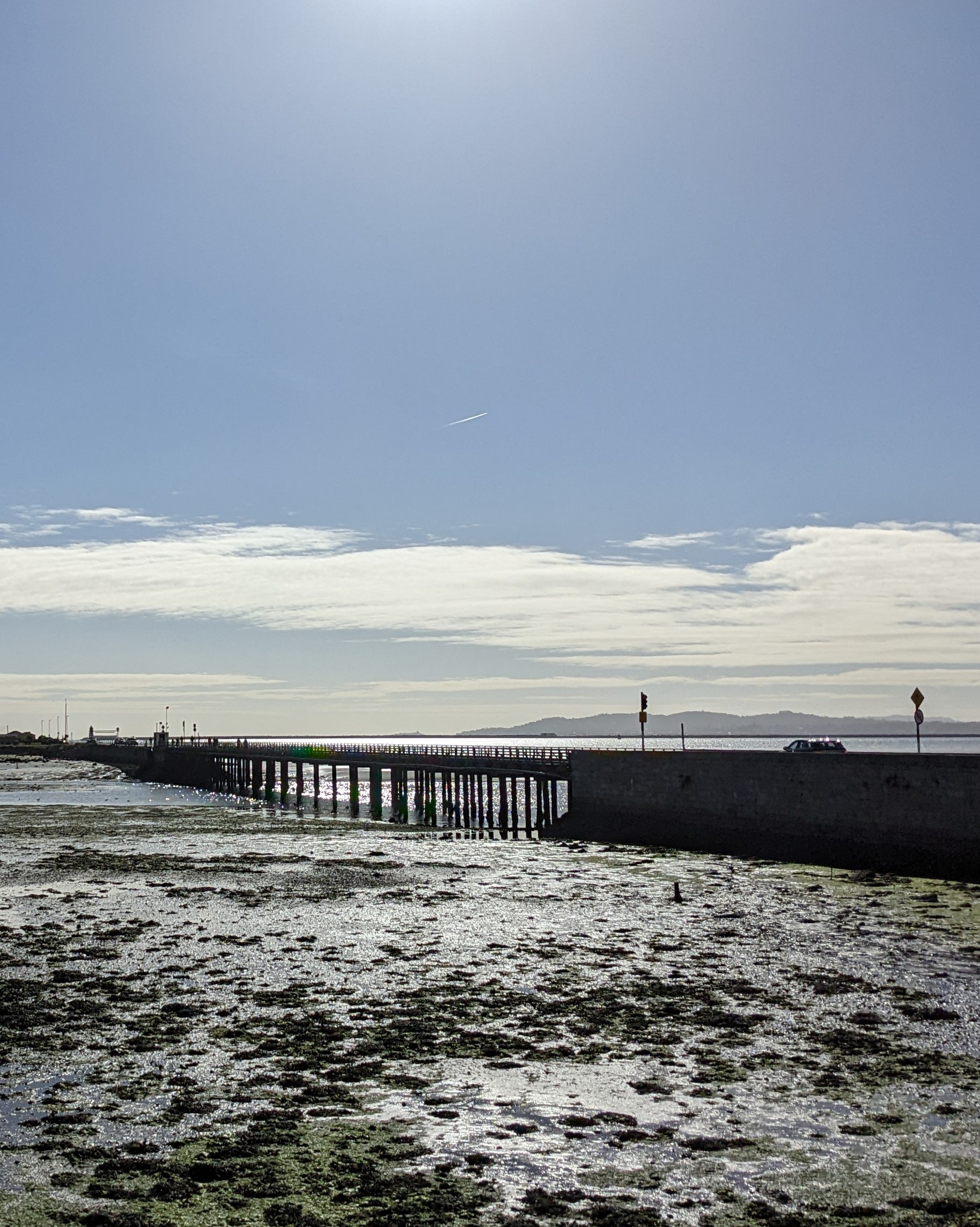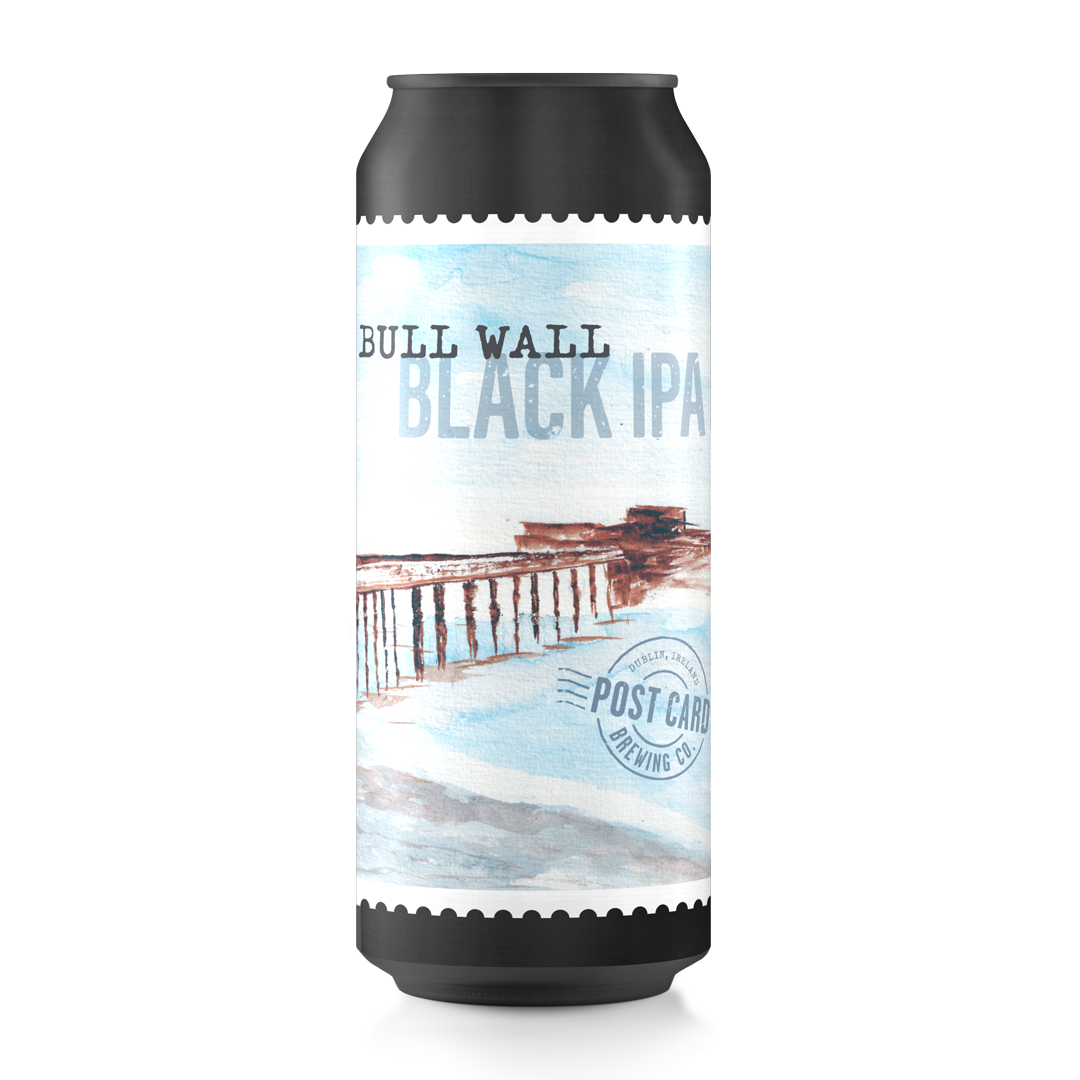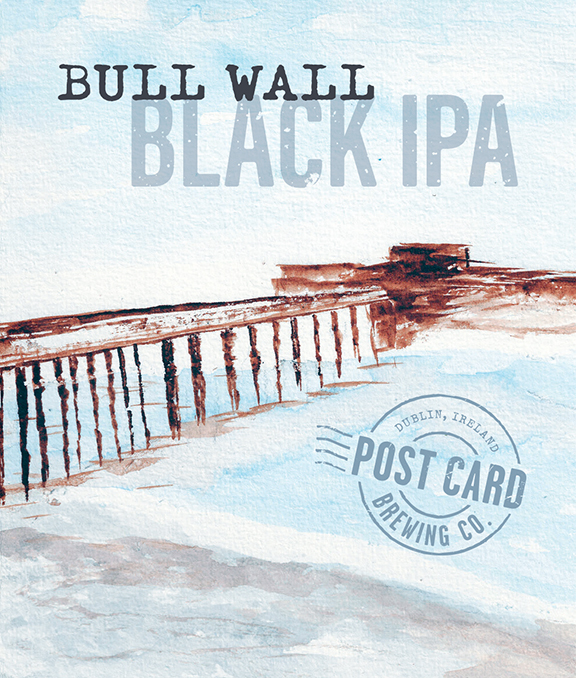Bull Island Black IPA
The Bull Wall and the Wooden bridge construction began in 1819 and was completed in 1825. The total length of the wall is 2900 m and it was built to help keep the Liffey clear of silt and debris. Over the next 5 decades following its construction the silt and sand began to build up and create an island, Bull Island. Soon after, Dubliners began to travel to Dollymount beach on Bull Island in Clontarf and visitors continue to this very day.
A Black IPA is not a traditional style, but it is a common enough dark beer that is a cousin to the stout, a hoppy sweet beer that has as much in common with an IPA as a stout. Our Bull Wall Black IPA uses a New England yeast to match the malty notes with a fruity balance.

Located at Dublin Port, emerging from the River Tolka and Clontarf, the Bull Wall drags out 2900m long, extending 3km into Dublin Bay. The sister wall of the Great South Wall, this sea wall was constructed with the express purpose of keeping the River Liffey clear of a variety of debris and silt.
The Bull Wall began life as a wooden bridge, constructed in 1819 to allow the actual great wall to be built. In 1820, the granite wall began to be worked on and saw completion by the year 1825. Coming in at a cost of 95,000 pounds, the Bull Wall was an expensive piece of work. At the end of the lengthy wall sits what, upon first glance, appears to be a green lighthouse. However, the structure actually initially operated as a masonry base.
In 1972, the wall saw a rare thing in the form of a new 20th-century addition to its surface: Réalt na Mara ('Our Lady, Star of the Sea'). The structure consists of a globe supported by three long pillars. Atop the globe stands a statue of Mother Mary. Officially blessed and released to the public on the 24th of September 1972, the statue features floodlights and is highly visible across Dublin Bay.
Over the next 50 years, the issue of silting continued and eventually, combined with a sand buildup, led to the creation of an island known as North Bull Island. This occurrence brought Dubliners to Dollymount beach to enjoy the island, and to this day visitors still make the trip out.


